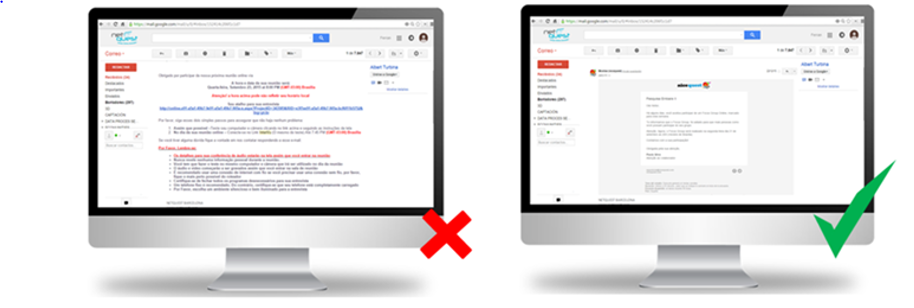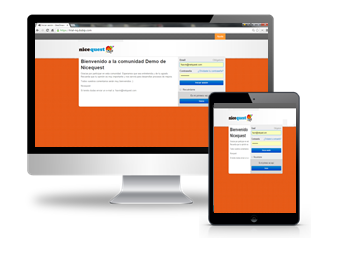In the field of Online Research Communities, projects do not usually surpass the 100 participants nor last over six months. In fact, most of our communities last less than 15 days and have on average 50 registered participants.
In this type of communities, recruitment is active. Unlike in passive recruitment, users do not register by chance in the community, but rather are specifically invited to participate and are informed about the aim of the research.
Recruiting for qualitative projects is without a doubt a complex matter that still requires deep methodological research. However, we have tried to identify some of the issues this sector has:
- Lack of understanding by the searched target. Information and expectations of the desired target sometimes are not the same for all parties: recruiters, agencies and clients.
- Bias attempts. Sometimes, excessive information on the searched target is given upon recruitment.
- Replacement difficulties. When a fraudulent participant is detected, they must be pulled out of the project immediately and invite someone else to fill in his or her place.
- Stress during the project. Every project needs its time. Having a 15‑day community where participants are required to participate a total of seven days is more advisable than having a seven‑day community that demands participants to participate every single day consecutively.
- Underestimation of the recruitment process. The client or management do not give enough credit to the recruitment process and thus use the wrong recruiting sources. This can result in low response rates, invitations classified as spam, difficulty for participants to access the digital platform, inability to carry out projects about targets with low incidences and, worst-case scenario, recruiting fraudulent participants.
Our first tip is that recruitment should be carried out through a panel that focuses on keeping its members and bets on quality. This way, the problems mentioned in the section regarding the underestimation of the recruitment process are solved for the most part.
In a quality panel, besides having a powerful incentive system, an environment is created where participants receive constant attention and know their privacy and security are ensured at all times.
In order to follow our first tip, some questions might come to mind: how can we recruit the right participant? Or is a good survey respondent a good participant in an online community?
Let us imagine that we have two eligible candidates to participate in a community. The first one is Juan, from Bogota, he works in a bank, is married, has two children and is a member of a panel. Moreover, he has shown interest in participating in an online community. On the other hand, we have Alfonso, who has the same exact profile as Juan. In this situation, one should wonder whether both would be good participants for an online research community.
And the answer is not necessarily. While in a survey the representation criterion takes preference, we want a participant of a community to be someone with ideas and easy with words, someone who likes expressing themselves by listening to reason and their feelings, and someone who enjoys debating and sharing their opinions with other people.
This is why our second tip is for you to add to the recruitment poll open questions that will allow you to analyze which participant would be the optimal for the community. We should not only make sure that they meet the necessary profiles of the target, but also that they reply thoroughly and reasonably to the open questions regarding the topic of our study.
Our third key tip is communication:
- Be clear and transparent. Participating in a community will take time and require some effort and concentration, but participation will be compensated. The conditions to receive incentives must be really clear. This might make it harder to get applicants, but they will be more committed and the registration and participation rate in the community will benefit from it.
- Let the owner of the database be in charge of communication. The invitation is key for success. Below you can find two real examples; one of which has proven to have better participation rates than the other:
Fourth tip. The recruitment survey must be short and clear. You should explain really well the conditions of the project and find out whether they are interested in taking part or not. If you have a panel with extended profile information like we do, use this information to find the right target.
Fifth and last tip. The digital platform should be intertwined with the database so that when participants receive an invitation, they can access the community without having to register. The first minutes in the life of a community are crucial in order to make sure that participants commit to the project. Any inconvenience they find could become a reason to abandon the project.
---
And with this last installment we finish our posts on Online Communities. We hope they have been very useful!






